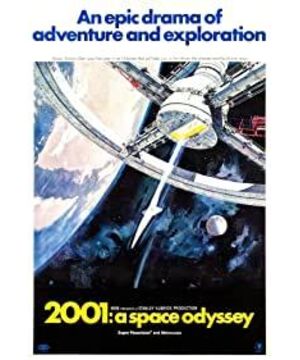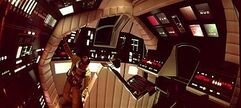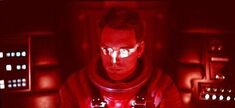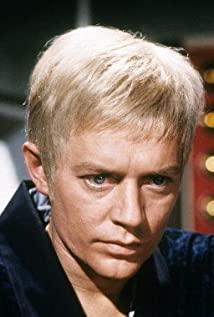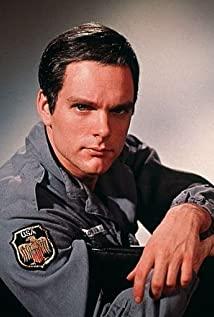1. Five minutes of darkness
Kubrick set up a rare scene in film history before the beginning of the movie: full-screen darkness. Accompanied by the HTC, intense and even slightly weird soundtrack "atmospheres" (atmospheres), this state lasted for 5 minutes. We can think of it as a pavement for an immersive state where the audience is seated one after another before the film begins and gradually enters the vast wilderness (like the "intermission" that appears in the latter part of the film, that is, the intermission. The longer films of that era Basically there will be, such as "Gone with the Wind", "Barry Linden", etc.). It can also be understood in conjunction with the next scene after the darkness: "the beginning of life on earth", that is, the "land of nothing" before the birth of the earth. This makes us think that before the beginning of time, all this has gone through an unexplained loneliness and loneliness, and the birth of life after a long sleep is even more exciting and moving, like a leaf stretched hard in the curl, people never thought about it in the ignorance. Bloom, realizing all phased leaps in the state of existence and way of thinking.
2. Blackstone and its significance
The philosopher Deleuze has such an exposition of "2001: A Space Odyssey" in his film theory work "Time-Image": He believes that the key object in the film-Blackstone, represents the phased states of different brains: Animals, humans and machines, and humans’ travel in space in the film is essentially an exploration of the brain and state of mind. In fact, we can now understand Blackstone as an enlightenment object that promotes human development. Through a certain force guiding method, a certain DNA segment of the human brain is changed to achieve genetic mutation, and then the species qualitative change and the evolution of the state of thinking occur. Therefore, "2001" is on the surface the exploration and expansion of human beings in outer space, but in the core of creation, it is actually the external embodiment of the evolutionary process of thinking and the self-game of human beings. In essence, it is the ultimate vertical extension of human thinking and consciousness, and the black stone is the key to the evolution and transition of each stage. This creative perspective gave Kubrick a very high point of thinking. He looked at and explored human internal logic and methodology just like Spielberg's evaluation of Lao Ku’s title of "God Himself". At the same time, this is also the greatest feature of the film: at the commanding heights of the history of thought development, science fiction, art, philosophy, and human destiny are combined together, and transformed into an external perfect system of aesthetic value system, reaching the double peak of art and thought. .
3. The dawn of mankind
When we watched "2001" for the first time, what puzzled us was that Kubrick did not let the film directly enter the state of space roaming. On the contrary, the first act of the feature film "Dawn of Mankind" began in prehistoric society. The primitive plains of life. Obviously, this was at least before humans learned to use tools (two animal skulls with stone cut traces were unearthed in Ethiopia, and they are believed to be at least 3.4 million years old). The film shows us the harsh living environment of orangutans: desolate savanna, dry water source riverbed, they live in caves, live a life of foodlessness, and are attacked by predators in the upper part of the food chain. The film deliberately presents a scene of a cheetah attacking an ape from behind, highlighting the low status of prehistoric humans in the barbaric primitive society and the constant survival dangers they encounter: it can be disasters in the natural environment and primary survival such as food and water. The lack of demand conditions can also be the oppression and deterrence of natural enemies in the (social) environment, and even self-killing caused by natural selective competition among similar species. How to survive in such a dangerous situation is a problem they face all the time.
Under such distressing external conditions, the Black Stone, a symbol of enlightenment thought, appeared for the first time. At this time, the soundtrack played a kind of hooting that caused group anxiety, which was harsh and nervous (in the future, every time Blackstone appeared, it would be accompanied by this kind of soundtrack. The connection between the two shows the relationship between anxiety and enlightenment, and it will be repeated in a while. Mentioned). Black Rock is surrounded by a group of apes. They both feel extreme fear of this strange object (the painful cry of the soundtrack is a performance), and are deeply attracted by it: they gradually approached from the initial observation from afar, and gathered around tremblingly. Reaching out to touch it is like every time human beings face the unknown curiosity and thirst for knowledge after history, they will explore and develop step by step under the fear of the future.
At this time, a special picture appeared: the camera switched quickly. In the overhead shot, the black stone stood tall, and at the top of it, a corner of the sun gradually appeared, releasing a dazzling light.
After this weird and peculiar composition shot, the plot turned and the perspective featured a "lucky monkey" who was specially "chosen" by God, who hesitated in front of a bone after being ransacked by a beast. At a certain moment, he seemed to be aware of something. He grabbed a thick white bone that looked like a martial arts stick and smashed it against the white bone on the ground. The periosteum suddenly flew away, with strange power, and at the same time interspersed with scenes of a group of beasts and wild birds crashing to the ground. Montage: This means that after humans have learned to use "tools"-a means to achieve special purposes, they have jumped to the top of the biological chain in the living environment.
In "A Brief History of Mankind" by Israeli writer Yuval Harari, one of the uses of early stone tools was to knock open bones to obtain bone marrow. Because after the lion was full and the jackal wiped out the meat, it was the turn of the monkeys. And they can only try their best to dig out the only edible tissue. Research on this point is very important to human historical psychology. In the study of prehistoric humans, the use of tools is generally regarded as a great progress in a positive sense. The survival of mankind is thus fully guaranteed, and material civilization can continue to develop. Since then, human history has continued to twist and rise along with tools: technological achievements such as steam engines, generators, computers, and nuclear energy are the crystallization of human rationality. Although the complexity of smashing bones by apes and the power of these technologies is incomparable, they all demonstrate a common way of thinking: relying on the use of instrumental thinking to obtain life experience, and then using abstract thinking to judge and Creation-Kant summed it up as reason in the eighteenth century.
Rationalism flourished in the Enlightenment in the eighteenth century. In the history of Western civilization, one of the most important achievements of the Enlightenment that originated in Europe and deeply influenced Europe was the establishment of the decisive foundation of "rational" thinking in people’s thinking, and rationality in various fields such as science, art, culture, and society. The status of the basic thinking methodology. It was under the impetus of rational enlightenment that Western civilization completely surpassed the political and economic system of feudal society, launched a bourgeois democratic revolution, established a world-wide capitalist system, and entered a stage of highly developed capitalist primitive accumulation. Since then, Western civilization, science, politics, economy, literature, history and philosophy... all regard the Enlightenment as one of the most important ideological sources.
In the harsh and embarrassing natural and social environment, and under the pressure of the exhaustion of survival needs, only rationality can support human beings in discovering and using tools, giving full play to their subjective initiative, understanding and transforming the world, and creating a transcendent posture of confrontation with the surrounding environment. Back in the film, after the "born" of reason, the lucky apes obtained more food and guaranteed the basic living material conditions of life. Then, a group of apes with bone tools fought against their peers in order to protect the interests of the group. The use of bones served as a weapon, killing each other, and expanding the expansion of the power of this group of apes and the soaring majesty of conquest (this is the same as that of human beings millions of years later. Taking up guns to kill each other, eradicate, and enslavement are so similar), they used rationality and the benefits of tools recklessly, while creating innovations in technology, they carried out killing and pressure on the outside world. At this time, the apes have completely evolved into Homo sapiens, which can be called real humans: prehistoric humans.
They threw the bones into the sky. At this time, a great transition in film history appeared: animal bones, which symbolized the achievements of prehistoric human civilization, became the highest scientific achievement of mankind in millions of years-the spaceship. This shows that during this long period of time, no matter how the human living environment changes, the use of tools and rational thinking have not changed.
4. Hal 9000
The history of mankind spans time and space in this stunning transition, and has entered an era of modern and well-regulated civilized order constructed mainly by rationalism and rapid development of science and technology. Even so, as mentioned above, human beings still have not gotten rid of the dependence on instrumental rationality.
The plot of the film follows a large number of gorgeous and gorgeous space travel pictures and Austrian national treasure classical music "Blue Danube" (very classic soundtrack, gorgeous waltz is extremely applicable in space, a peculiar chemical reaction) Gradually unfolding, this kind of professional, highly aesthetic special effects and setting are still outdated, and Kubrick and his team had reached this level in 1968.
American scientific researchers discovered an anomalous substance of unknown origin in a secret location on the moon, and a team led by Dr. Floyd landed on the moon and came to the scene. Blackstone appeared for the second time, uttering a harsh externalizing sound of anxiety. This is a precursor of danger in the following text, and it is also a male hormone that continuously stimulates the expansion of human consciousness, and promotes humans to continue on the evolutionary journey of self-thinking (externalized to the surface of the interstellar exploration mission). After that, it quickly switched to the feature film of the second act of the movie "Jupiter Mission" eighteen months later.
There are two astronauts F and D on the spacecraft, three scientists about to sleep deeply, and the advanced artificial intelligence computer-Hal 9000, which has the power to control and control the spacecraft. And we can know that the core secrets of Blackstone, the true purpose of the Jupiter mission, are all known by Hal 9000, and the astronauts are not aware of it. On the whole, the various parts of the spacecraft constitute the brain's thinking module: the highest human wisdom, Hal 9000, represents the ultimate rationality, and the two F and D are another type of human thinking that is not completely alienated (rationalized).
The plot of this scene is unfolding in the sharp contradiction between humans and machines: Howl's technical error caused the astronauts to create a gap between them and intend to shut them down. And Hal used an irresistible way of coercion: reading his lips and understanding their plan. At this time, a paradox arises: Hal 9000 is trusted by the leader, and at this time, the closure of humans to themselves is very likely to occupy this information. So Hal 9000 could only kill F to hinder the Jupiter mission, and D who was going to rescue was blocked from the spacecraft.
At this point, let's make a footnote to the essence of AI, which is the essence of tool rationality. Marx Weber once put forward the concepts of "value rationality" and "instrumental rationality". The former is the ultimate goal established after thinking, and the latter is a means to realize value rationality in a narrow sense. After instrumental rationality is externalized, it is an abstract empirical method law or a purely physical tool. Apes use tool rationality to obtain real objects and kill foreign enemies, while the tool rationality of artificial intelligence is a kind of supreme realm independent of human spiritual entities, pure and cold.
D, with courage and determination, and calm and rational thinking, breaks through numerous obstacles and plays with artificial intelligence layer by layer. In the end, with a colder, more rational, and more cruel thinking than Hal 9000, F successfully closed it under the palpitations of Hal 9000. The whole process constitutes a paradoxical logic set, that is, only by using tool rationality better than artificial intelligence can we defeat the opponent. F completed the evolution of human beings to the top of rationality in the crystallization of wisdom that defeated instrumental rationality.
After learning about the conspiracy of the Jupiter project, the astronauts accompanied the human brain to the highest level of rationality. At this time, the direction of human development is uncertain. He learned of Hal's own recording: "This mission is so important to me, I don't allow you to destroy it". Dave realizes that Dohal's "betrayal" is closely related to the secret carried by Blackstone. Out of rational exploration of the unknown, F embarked on an interstellar exploration to find the truth-Blackstone, the core of the mission. Soon the film switched to the third act "Jupiter and the Infinite Sphere"
5. Kubrick
Before talking about the third act, briefly talk about Stanley Kubrick. Throughout his life’s works, we find that after his real debut masterpiece "Road to Glory", except for "Spartan Uprising", which has no actual control rights, all the films revolve around a matrix: rational system and others. Explain all aspects; "Road to Glory" touches the relationship between the community and the individual for the first time, showing the conflict between the coercive system of the state machinery and the individual consciousness. The Nazi transcendental institutionalization of "Doctor Strange Love" is related to political ethics and desire. "A Clockwork Orange" is the restriction of desire under strict system constraints and the logical vicious circle of overcoming violence with violence. "Barry Linden" is the decline of a downright nobleman at the advent of the age of reason. "The Shining" discusses the mutual game between personal consciousness and enclosed space. "2001 A Space Odyssey" is a major milestone in Kubrick and even the history of film, that is, the use of graceful and gorgeous space fables to achieve a rational breakthrough in the enslavement of mankind for millions of years. In other words, Kubrick reborn human beings.
6. Rebirth
The third act "Jupiter and the Infinite Sphere" begins after a short intermission. At the beginning of this scene, Astronaut F has arrived in the outer space around Jupiter, and a huge black stone lay across the universe. And D is approaching Blackstone in a small exploration vehicle. In the process, it passed through dazzling nebulae and vast deserted canyons, and finally stopped in a surprisingly Louis XVI style suite.
This is the most puzzling description in film history. The entire ten-minute flight in time and space is madly beautiful.
Kubrick believed that many problems of human civilization originated in the eighteenth century. And the room D in the illusion happened to be in the time of Louis XVI, the last French king in the 18th century, (and this is also the time and place where the Enlightenment originated and flourished.) Rococo in the Louis XVI period The style decoration symbolizes the peak of human aesthetics, symmetrical, solemn and gorgeous. Here, D is no longer the astronaut driving the Discovery, but has become a symbol of mankind. He spent the rest of his life in fragmented jumps, and for the rest of the time he was always confined in the luxurious room of "enlightenment". This is quite like the thought evolution experiment space that Blackstone prepared specifically for mankind, just like high-dimensional creatures manipulating our thoughts and behaviors throughout our lives.
The black stone symbolizes the original sin object of enlightenment reason. The first time was the enlightenment of apes in prehistoric times, the second time was a manifestation of the rational crisis facing mankind on the moon, and the third time was in the space near Jupiter, which revealed that mankind is really facing stagnation, The dilemma of confusion of the future appeared in the illusion for the fourth time in the rococo suite, heralding the end of rational human development, and at the same time, it also revealed that only by rebirth and overthrowing the past way of thinking can a new way be opened up to get rid of the slavery of black rationality. It is precisely in this complex, multi-stacked and progressive text that Blackstone's meaning and instrumental rationality correspond closely in the history of human thought development, forming a complete systematic theoretical system and a solid theoretical basis for works. In the end, just before this moment of human rebirth, Black Stone appeared before the road of human development. All instrumental enslavement of rationality arises from it. Without breaking through it, how can one get rid of the shackles of reason for millions of years?
Nietzsche believes that human evolution is divided into three processes: camels, lions, and children. The first is the stage of "camel". I gradually accept something unconsciously. This process is called bearing weight. I work hard and have accumulated some experience and thinking, but it is extremely passive. It is "I am doing" and "I am doing Should"; the second is the "lion" stage, that is, "I want to do" and "I want to do", creating free life values, and dancing hard after defying all values. The third stage is children. D became a baby after breaking through the black stone, and returned to his mother, the earth, watching this old world enslaved by reason.
This means that only by being reborn and starting a new evolutionary path with completely different ideas can mankind get rid of the dominance and slavery of instrumental rationality to mankind.
View more about 2001: A Space Odyssey reviews


